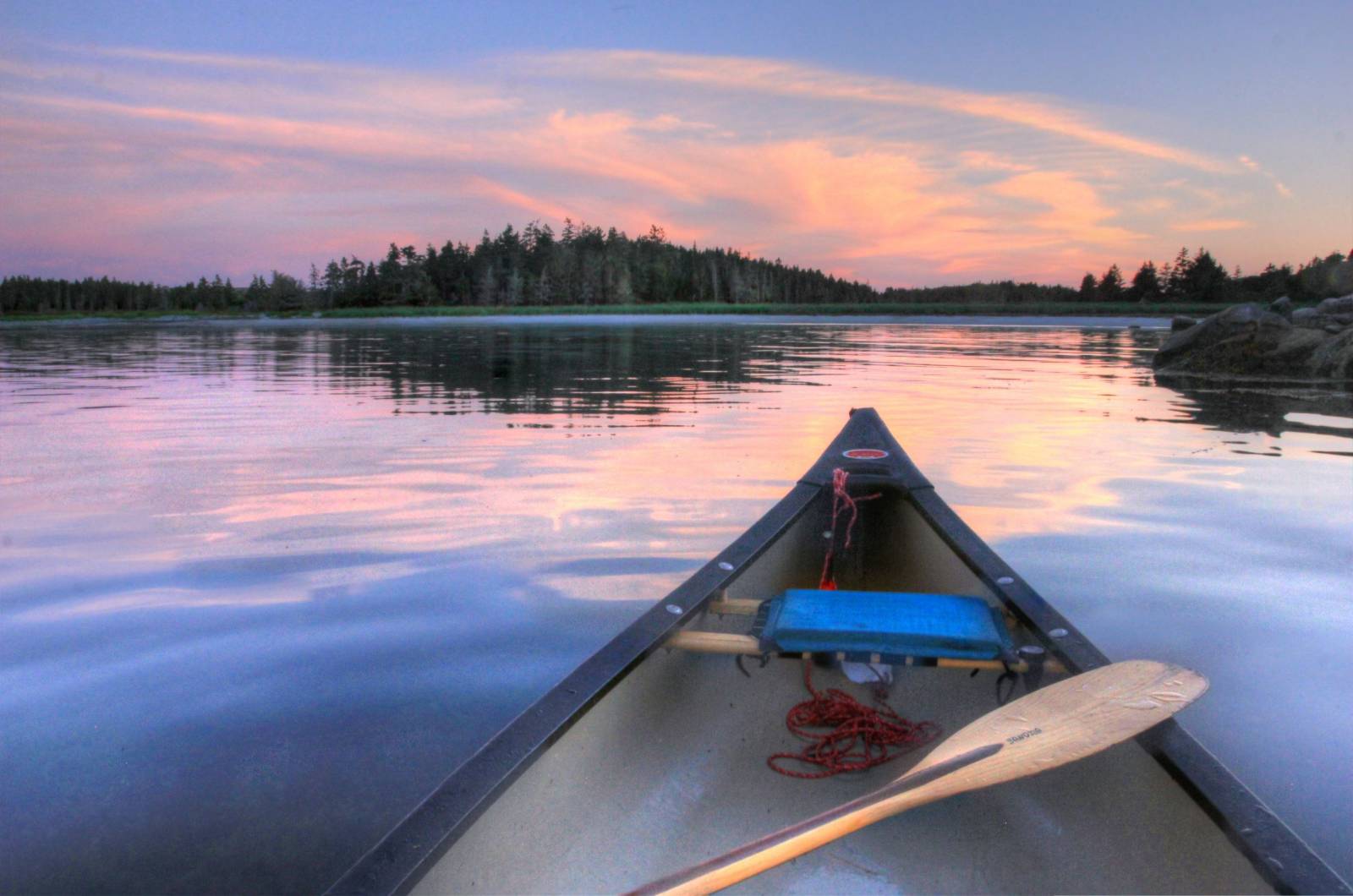Nature At Its Best
Looking for some "wow" natural spaces for an adventure in Nova Scotia? Guest author Sandra Phinney presents her favourites list, along with a story to inspire a visit.

It's a balmy August day. Four vehicles pull up at Mason Point in Tangiers, NS, each carrying one canoe, two people, and enough gear and grub to last four days. We're headed out to Baltee Island - part of the 100 Wild Islands - where we'll set up camp. Over the years, hundreds of kayaks have left these shores. That's not a big deal; what's unusual is that we intend to do this trip in canoes - a rare sight, as few venture out for a wilderness canoe trip over the briny deep.
The weather forecast calls for everything from sun to rain, wind, fog and an electrical storm. Do we have what it takes to camp and explore the 100 Wild Islands - Nova Scotia's largest coastal wilderness region - for four days in spite of the weather?
Nutshell: we not only survived, we thrived. Sure, the swells on the second day were a bit of a challenge (read: downright scary), but we took our time crossing to Carryover Cove where the rocky cliffs and emerald lagoons were simply spectacular.
That trip was so memorable, I returned the following year with a group of women in both kayaks and canoes for another wilderness trip. This time, we set up our base camp on Shelter Cove where we tucked our tents into the woods on the edge of a crescent beach and did day trips exploring the region.
When I originally made a list of "wow" natural spaces in Nova Scotia, I had over fifty. Narrowing it down was a gargantuan task; this is only a smattering of what the province has to offer.
1. The 1OO Wild Islands
The region known as The 100 Wild Islands features more than 250 kilometres of coastal habitats and 400 acres of wetlands. It includes everything from boreal forests and islands galore to bogs and barrens, hidden coves, and pristine sandy beaches. And we can thank the staff and volunteers at the Nova Scotia Nature Trust for acquiring - and preserving - this region. If kayaking (or canoeing) is your thing, this is nirvana.
2. Joggins Fossil Cliffs
This UNESCO World Heritage site is the world's most complete fossil record of life in the Coal Age dating back 300 million years. Just imagine! This fascinating attraction located in on Chignecto Bay is best appreciated by taking a scheduled tour of the cliffs with an interpreter from the centre, or you can hire a guide in the village. Be prepared for lots of surprises.
3. Sable Island
Sable Island is a National Park Reserve located far out in the North Atlantic. The island is home to the famous Sable Island wild horses, where they roam freely. It's also home to giant shifting sand dunes, as well as scores of plants, birds, bugs, and the world's biggest breeding colony of grey seals. The island's human history is rich, varied, and ancient. Accessible only by sea or air.
4. Cape Sable Island
Not to be confused with Sable Island, listed above, Cape Sable Island is home to the famous Cape Island Boat or "Cape Islander." The island is located in the most southern part of Nova Scotia and is accessible by a causeway from Barrington Passage. Once on the island, head to The Hawk, a stunning beach which is also an Important Bird Area. At low tide, it's also home to the 1,500-year-old "drowned forest" of exposed petrified tree stumps.
5. Tobeatic Wilderness Area
Referred to as "the Tobeatic" or "Tobi," it's the largest wilderness area in the Maritimes. The Tobeatic spans parts of five counties and encompasses 118,000 hectares. It features everything from old fire barrens to unique old growth forests, giant erratics, expansive wetlands, long stillwaters, more than 100 lakes, the Heritage Shelburne River - and more. It's a provincial jewel.

6. Tusket Islands
Local lore says there are 365 islands in the Tusket Islands--one for every day of the year. That's a tad exaggerated but most agree that including islets and significant ledges, there are over 200 islands, each with a distinct personality. As the crow flies, the Tusket Islands stretch about 20 miles from Robert's Island off of Yarmouth to Seal Island off of Shag Harbour. To get a sense of the islands, its history and culture, sign up for Tusket Island Tours.






Leave A Comment